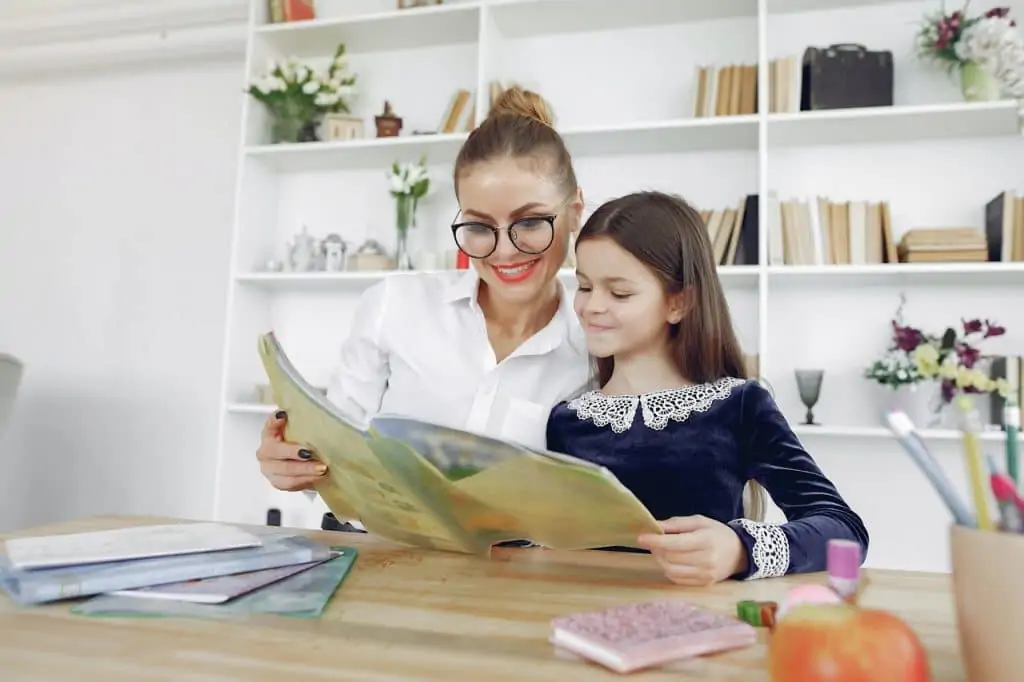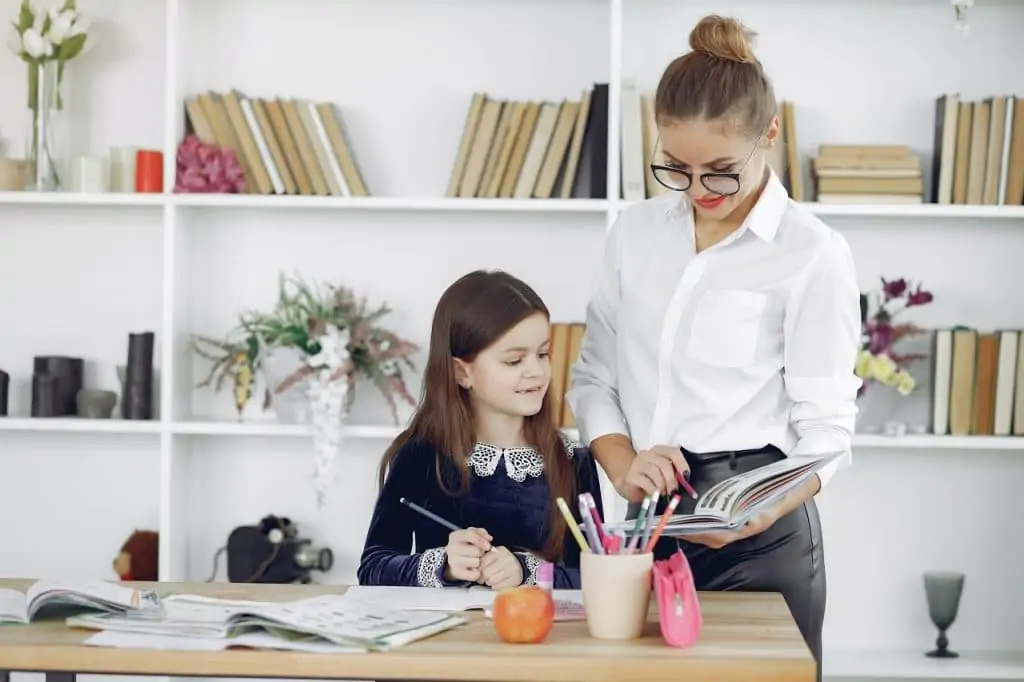Motivational goal setting for students can support their developmental skills needed for improved academic and professional achievement!
Have you always wanted to learn how to teach goal setting for students?
This article is a how-to guide on motivational goal setting for students. First, we are going to talk about why goal setting is important for school. Then, we are going to provide you with student goals examples to use at home, along with student goals template to start with.
By the end of this article, you should have foundational knowledge about common strategies to teach goal setting to students with a variety of formats.
What is Goal Setting for Students?
Setting goals is key to school success. As such, it becomes increasingly important to teach students how to set and track goals that ultimately shape critical life skills for future endeavors. Goal setting for students is likely a new skill that allows them to track, plan, and organize their school tasks or other responsibilities.
Goal setting for students is an important developmental skill needed for their genuine understanding on how to finish assignments or projects, along with other life commitments and responsibilities. Younger students, in particular, will need this skill to accomplish harder assignments and heavier course loads that are typically expected in high school, college, or graduate education.
Goal setting for students can improve teacher’s classrooms and even shape good behaviors at home. Here is a list of outcomes that you can expect if you use goal setting strategies effectively with yourself, your child, or your students.
- Goal setting challenges students to set small goals toward a certain area or skill that they can improve on for better performance.
- Goal setting gives you a sense of purpose to set out a goal and complete it.
- Goal setting can improve self-confidence by having students set goals and feel accomplished after meeting them.
- Goal setting can be a great strategy to measure progress for more motivation, especially if you make use of visual tactics.
- In the same vein, goal setting can increase motivation by just seeing what you are capable of achieving.
- Goal setting can teach you important life skills for time management, organization, and planning; significantly important skills needed to be a successful professional!
- Goal setting also sets the pace for success—using these skills will show you how to use your time efficiently and organize yourself to set meaningful goals.
Why is Setting SMART Goals Important for Success in School?
SMART goals are one popular strategy used to teach goal setting to students. SMART goals stand for
S = specific
M = measurable
A = attainable
R = relevant (and realistic)
T = timely
SMART goals are popular because they can be adapted to nearly any setting. For instance, we’ve seen SMART goals applied in family training programs, dietary practices, research planning, course designs, and so on. As you can imagine, using this strategy effectively will assure you positive results on school performance and much more!
Learning how to set SMART goals becomes increasingly important as you start to progress into higher grade levels. The more independent your schoolwork becomes, the more you need to act on decisions to carry out certain commitments, tasks, or duties within a given deadline.
How do we apply SMART goals?
You can start out with a list with each of the five components to SMART.
1. For specific, you want to detail what exactly you want to do, what is it that you want to happen?
2. For measurable, you want to create smaller tasks that will show you progress. For instance, if I wanted to build a shelf, I would first need to create measurable steps to show that I am reaching my hard work.
To make this goal measurable, smaller steps would include buying the wood at the store, sanding the wood down, cutting into 4 blocks, dedicating 30 minutes at the shop after work, etc.
3. Attainable refers to the quality of the goals that have been set. The question here really focuses on whether the specific goal is attainable. Some people tend to create grandiose goals; this step helps keep it practical.
4. Relevant and realistic is similar to attainable; while attainable considers your existing resources and time, relevant and realistic focuses on whether your goal setting plans are realistic.
In addition to setting grandiose goals, people also tend to overexaggerate the amount of time they can commit to smaller tasks to get to the overarching goal.
Let’s go back to the example of a bookshelf. We mentioned working at the shop 30 minutes every day after work. If we think about this a little more, it might not be realistic especially if we tend to work long hours, are tired from the workday, etc.
Perhaps it might benefit us to change this to 30 minutes after work once a week. See how that task has now become more relevant to our daily routines and realistic to our expectations?
5. The timely component is meant to show students that they must set an expected time to complete the goal specified above. When do you plan to complete your goal?
As you can see, using this strategy can be used to set goals for success in schools. Students are actively thinking about how to move toward their goals, while also reflecting on what needs to be done in that process.
Here is a resource to start your SMART goals.
How Can Teachers Help Students Achieve their Goals?
Teachers can help students achieve their goals by first modelling these goals for them. It typically helps to model behaviors in order to change behaviors. Thus, teachers should make every effort to reflect goal setting behaviors in their classrooms.
Now, what modelling goal setting in classrooms might look like is another factor to consider.
Teachers should try to be creative if they are modeling goal setting in the classroom. Classrooms for younger students tend to use visual displays of goals, with concrete objects that are actually moved when a student achieves a step closer to their ultimate outcome.
Another way teachers can help students achieve their goals is by collaboratively creating goals with them. For instance, teachers can create a goal setting board and have students raise their hand to add goals onto the list. These goals would then be expected to be achieved as an objective for the whole classroom.
Alternatively, teachers can ask students to create a draft of goals. Once they list their goals, teachers can help shape their goals into measurable and realistic action steps.
What are Common Strategies for Supporting Student Goal Setting?
Now, let’s discuss some common strategies to teach motivational goal setting for students!
Introduce goals
First, it will be important to introduce what goals are to younger students. Young students do not necessarily understand the concept of goals just yet, so it’s best to start with foundational concepts!
We recommend the use of visual stories or books for older children that demonstrate the process of goal setting and how it can benefit one’s work. This will provide the foundational concepts about goal setting as it relates to tasks, in particular.
Here are some recommendations we have found by grade levels:
Preschool – 2nd grade
Giraffes Can’t Dance by Giles Andrede & Guy Parker-Rees
A Chair For My Mother by Vera B. Williams
Ruby’s Wish by Shirin Yim Bridges
The Empty Pot by Demi
Elementary grade level
Whistle for Willie by Ezra Jack Keats
Squirrel’s New Year’s Resolution by Pat Miller
Salt in His Shoes by Deloris Jordan
Thank you, Mr. Falker by Patricia Polacco
Middle School
The Boy Who Harnessed the Wind by William Kamkwamba
Sixteen Years in Sixteen Seconds: The Sammy Lee Story by Paula Yoo.
Being Teddy Roosevelt by Claudia Mills
Start small
Another common strategy that teachers and parents use are to start having students set small, short-term goals. You can encourage non-academic goals to start. So, for instance, have students set goals based on their character or hobbies.
In particular, we suggest the following goals for older students in middle school and high school should set goals:
- Long term plans
- Hobbies and interests
- Family and Community
- Healthy Eating
- Social Life
- Physical health
Be Creative
Our next suggestion on how to teach goal setting to students is to cultivate your creativity in creating displays or processes for goal setting. For instance, many teachers use visual tracking systems, like a star chart, to drive goal setting in the classroom.
- Here is a list of strategies for displaying student goals
- Star charts
- Student goals bulletin board
- Data walls
Not sure where to start with these?
Don’t worry, we have you set with some student goals template!
- Here is a resource of activities to start.
- Here is another resource of student goals templates.
Using visual displays of some kind or activity increases accountability for students to commit to their goals. These strategies also help students track their progress, which is important for ongoing motivation. So, the more creative, the better
Apps
Thanks to technology, there are also plenty of virtual apps available to help keep students on track with their goal setting! Similar to using visual displays, apps can help with accountability of completing goals.
Here is a list of apps for more strategies on how to teach goal setting to students:
- me
- Toodledo
- Stickk
- Lifetick
- GoalsOnTrack
- Balanced
- Habit List
Here is a resource for more information.
Integrate celebrations
Students’ hard work should always be celebrated! Acknowledging their achievements can be important motivational factor that encourages them to continue setting and completing their goals. We encourage teachers to make celebrations a fun habit in their classroom.
Some examples of ways to celebrate achievements in classrooms include the following:
- Send happy mail. You can send an email for congratulations or a paper letter at a student’s desk.
- Community applauding. Have your students share their accomplishments publicly with the classroom to acknowledge their efforts as a community. This helps build comradery among students and can curtail a culture of competition.
- Use small rewards or coupons. We have seen the star chart throughout our lives, make use of these as rewards. Kiddos love stickers. For older children, you’ll want to consider other small rewards, such as a comic to read, a classroom role, or more free time.
What to do When Your Original Goals Aren’t Working
If you are working toward your goals, but find that you are not necessarily progressing as much as you’d like; then, it might be time to revisit your goals. We suggest reviewing your goals using the SMART paradigm.
If your original goals aren’t working, it is possible that you may have set goals that are not realistic or specific enough. Try to revamp your set of goals to something that is more feasible for your schedule.
Another suggestion we have is to start even smaller. If you’ve already created tasks within your overarching goals, it might be a good idea to make these tasks even smaller.
Here is an example: If your goals are to write 1200 words a day for your paper, but you aren’t getting very far along after a few weeks. Then, maybe it’s time to curtail the number to 500 words and see what changes from there.
We encourage you to change some aspect of your goals as a process of trial and error. Sometimes, even changing the time you commit to a particular task can greatly improve your progress toward your goals.
5 Student Goals Examples
Here are 5 student goals examples
- I want to have an average of 93 in reading by the end of May 2020.
- I will read 30 minutes at least 3 times a week.
- I will complete my math homework by 7pm during the week.
- I will use kind words with my friends and family.
- I will not raise my voice when speaking to my mom.
Examples of Teachers Supporting Student Goal Setting
Example 1. This example on how to teach goal setting to students uses a set of visual tracking system for a set of specific goals in the classroom. It then uses small reward systems for each accomplishment.
Example 2. Here, we see a teacher uses reflections as a strategy for motivational goal setting for students. Not only does the teacher include the acknowledge of goals achieved, but asks students to think about why it went well. This is a great strategy that can help improve next action steps for future goals.
Example 3. In this last example, a teacher used the simple visual of books to help students track their usage of the iReady online platform. When a student achieved one of the measurable outcomes, they color in a book.
Wrapping Things Up: Goal Setting for Students
Goal setting for students throughout their development will ultimately determine their success in school and in future endeavors. It is crucial for students to learn how to set goals efficiently to attain these achievements. The most important thing to remember is that teachers may an important role in modeling strategies for goal setting to students.
If you found this post helpful, be sure to check out our other high school study tips.
> How to Be a Successful Student: 25 Tips
> How to Be Successful in High School: 71 Tips
> How to Get Straight A’s: The Ultimate Guide

















